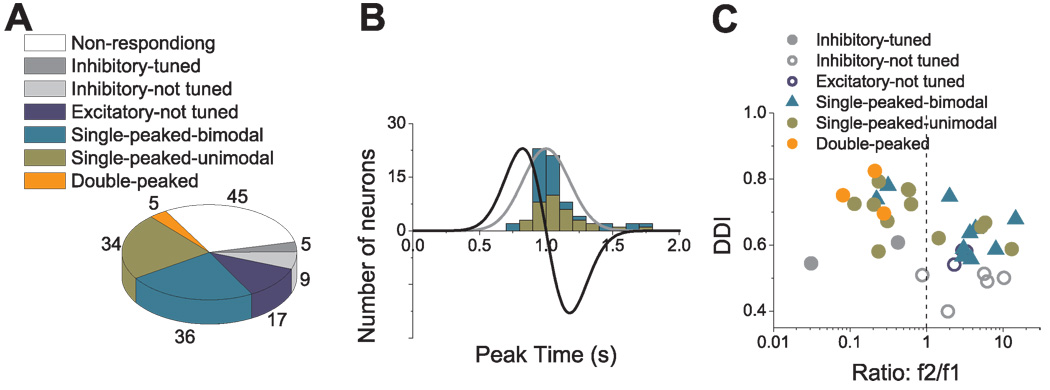Figure 15.
Population summary of the spatio-temporal responses to 3D rotation. (A) Classification of responsive cells (n=106). (B) Distribution of the peak times for single-peaked cells. Green bars: cells with unimodal spatial tuning (n=34); cyan bars: cells with bimodal spatial tuning (n=36). (C) Scatter plot of tuning strength (DDI at peak time) during transient rotation versus the f2/f1 ratio from sinusoidal rotation responses. Each point in the scatter plot corresponds to a cell, and symbol shape/color reflects its classification as inhibitory (tuned or not tuned, filled or open gray circles, respectively), excitatory but not tuned (open blue circles), excitatory single-peaked (bimodal/unimodal, cyan triangles/green circles), or double-peaked (orange circles).

